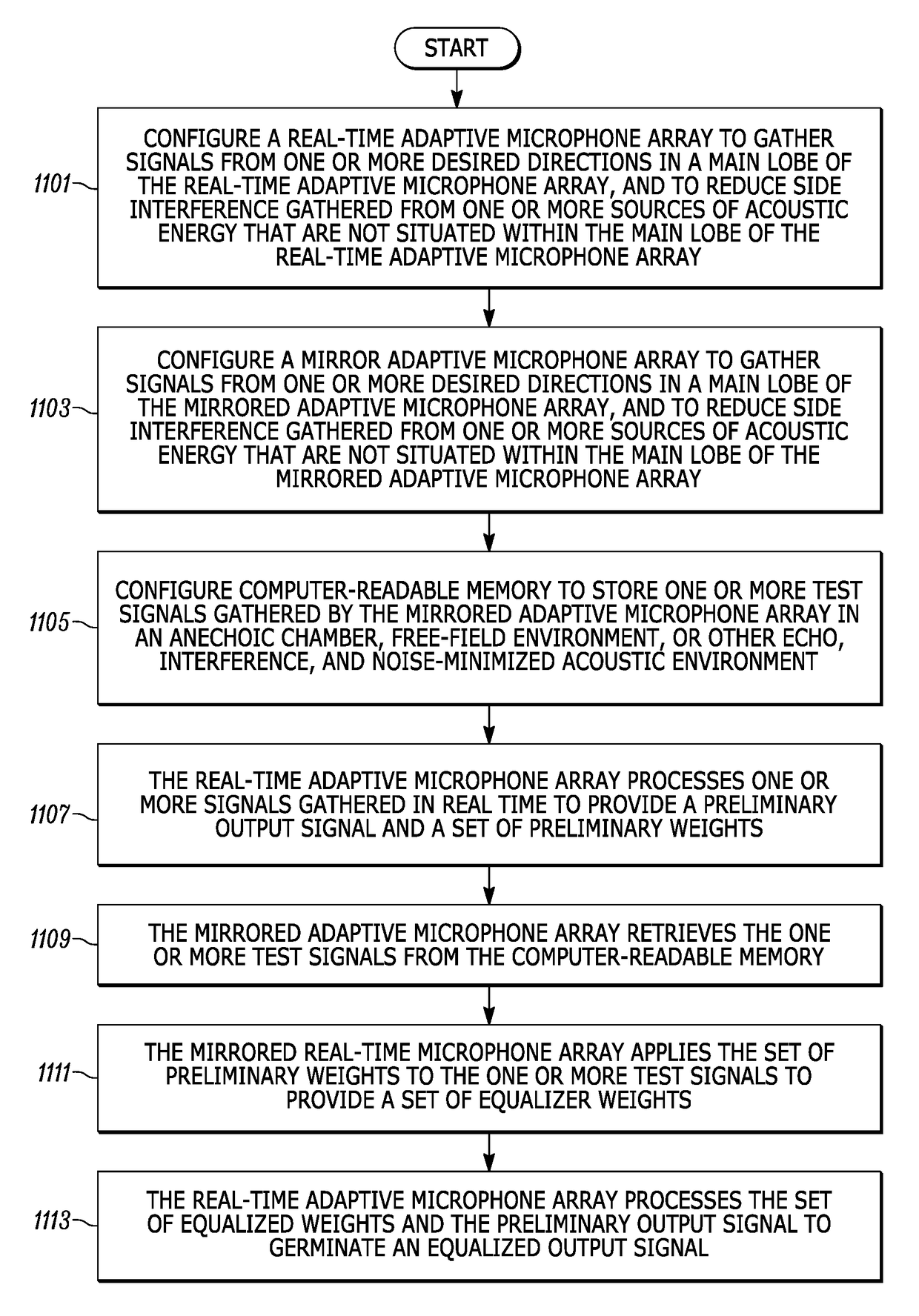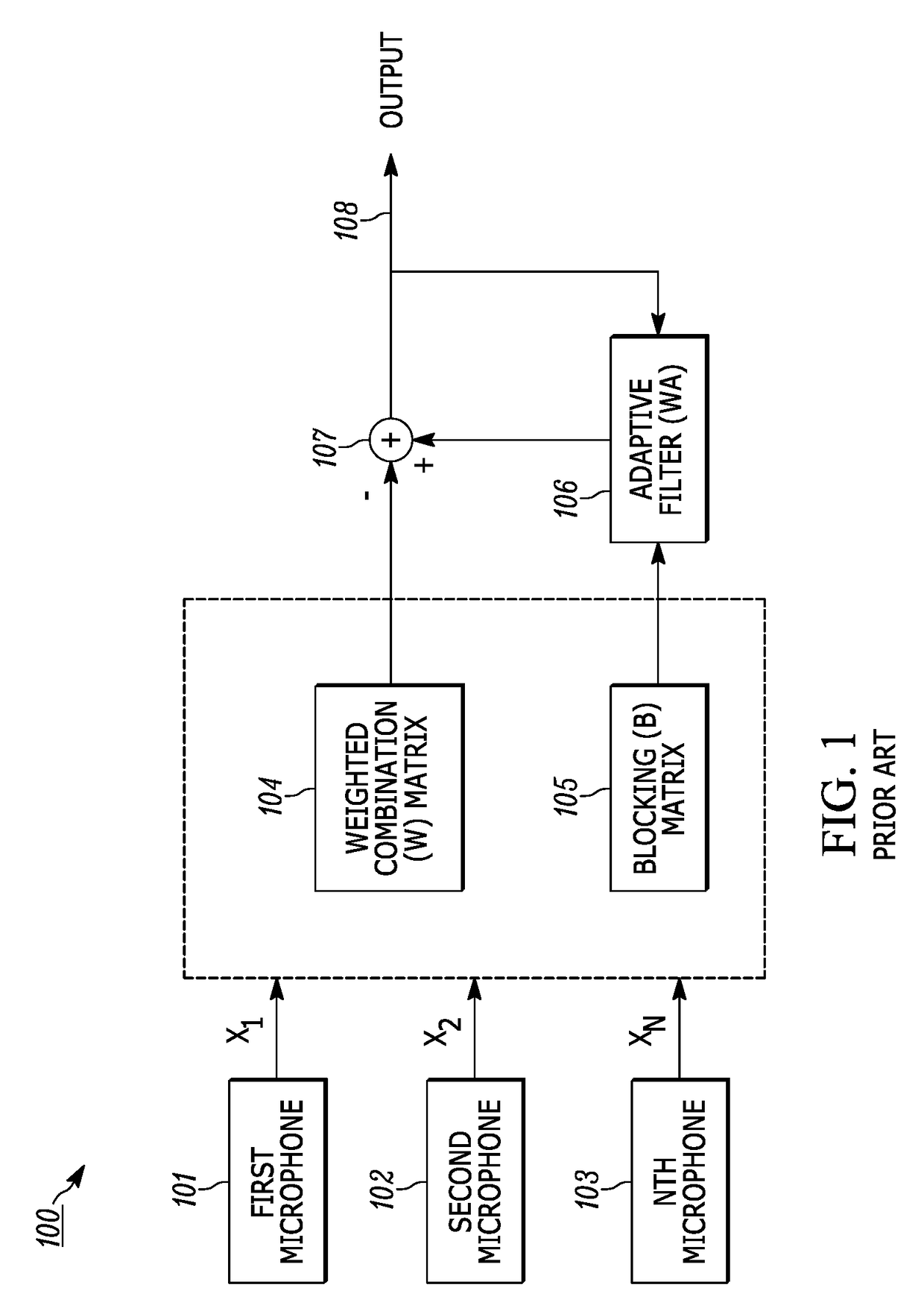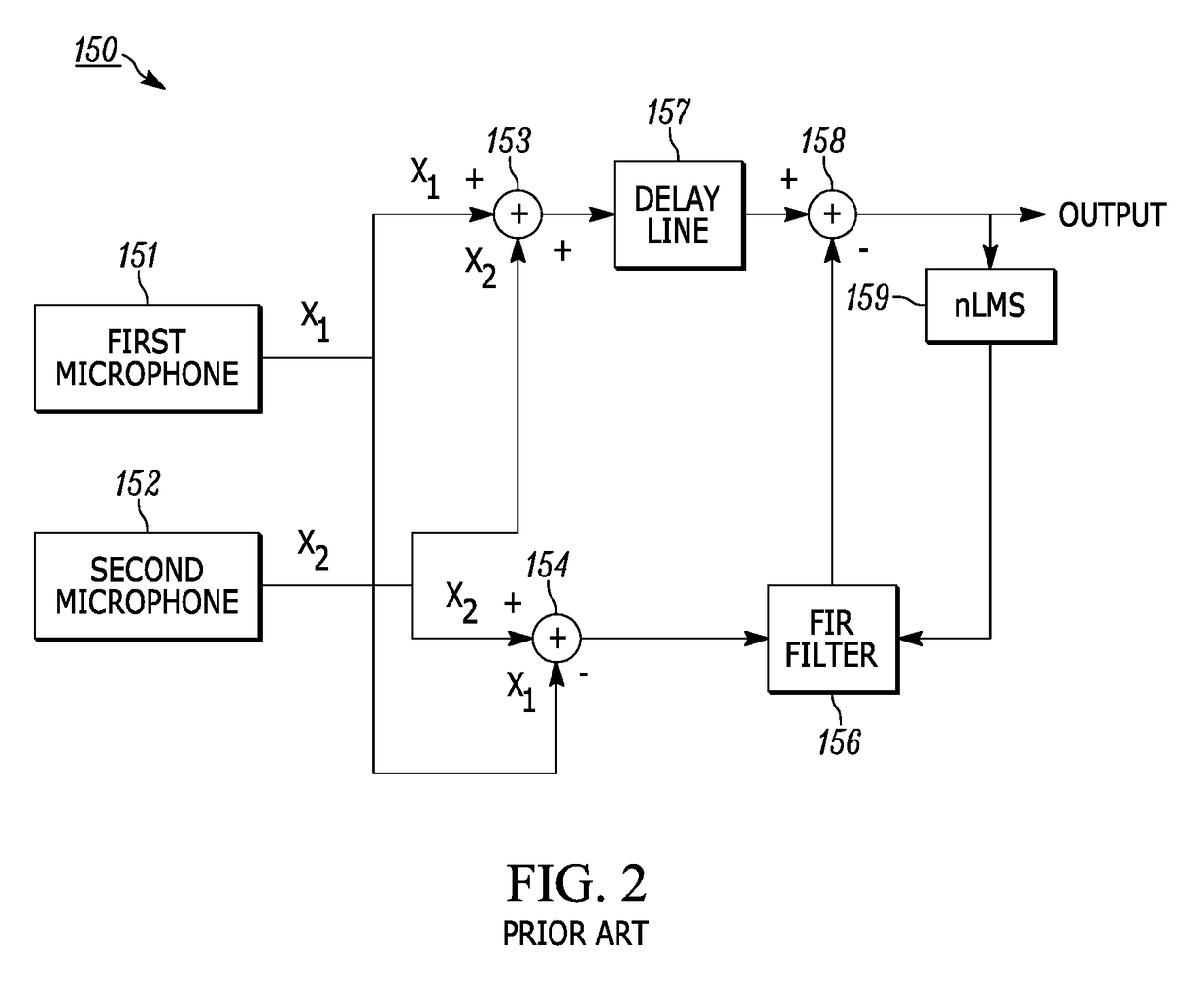Methods and apparatuses for performing adaptive equalization of microphone arrays
a microphone array and adaptive equalization technology, applied in the field of audio processing, can solve the problems of undesirable degrading of signals of interest in the main lobe of arrays, and achieve the effects of reducing side interference, minimizing or reducing the modeled degradation of gathered signals, and reducing side interferen
- Summary
- Abstract
- Description
- Claims
- Application Information
AI Technical Summary
Benefits of technology
Problems solved by technology
Method used
Image
Examples
Embodiment Construction
[0019]According to a set of exemplary embodiments, an adaptive microphone array is configured for gathering signals from one or more desired directions in a main lobe of the array. This functionality is achieved by adjusting the relative amplitudes and phases of the signals produced by each of a plurality of individual microphones in the array, and then combining the adjusted signals into a single composite output signal. The adaptive microphone array is further configured for reducing side interference from one or more sources of acoustic energy that are not situated in the main lobe. Side interference is reduced by utilizing a first circuit that will orient a null along the one or more desired directions towards a desired source, as well as a second circuit oriented with its maximum sensitivity towards the one or more desired directions. Using an adaptive filtering mechanism, a first signal produced by the first circuit and containing little or no signal from the desired source is...
PUM
 Login to View More
Login to View More Abstract
Description
Claims
Application Information
 Login to View More
Login to View More - R&D
- Intellectual Property
- Life Sciences
- Materials
- Tech Scout
- Unparalleled Data Quality
- Higher Quality Content
- 60% Fewer Hallucinations
Browse by: Latest US Patents, China's latest patents, Technical Efficacy Thesaurus, Application Domain, Technology Topic, Popular Technical Reports.
© 2025 PatSnap. All rights reserved.Legal|Privacy policy|Modern Slavery Act Transparency Statement|Sitemap|About US| Contact US: help@patsnap.com



